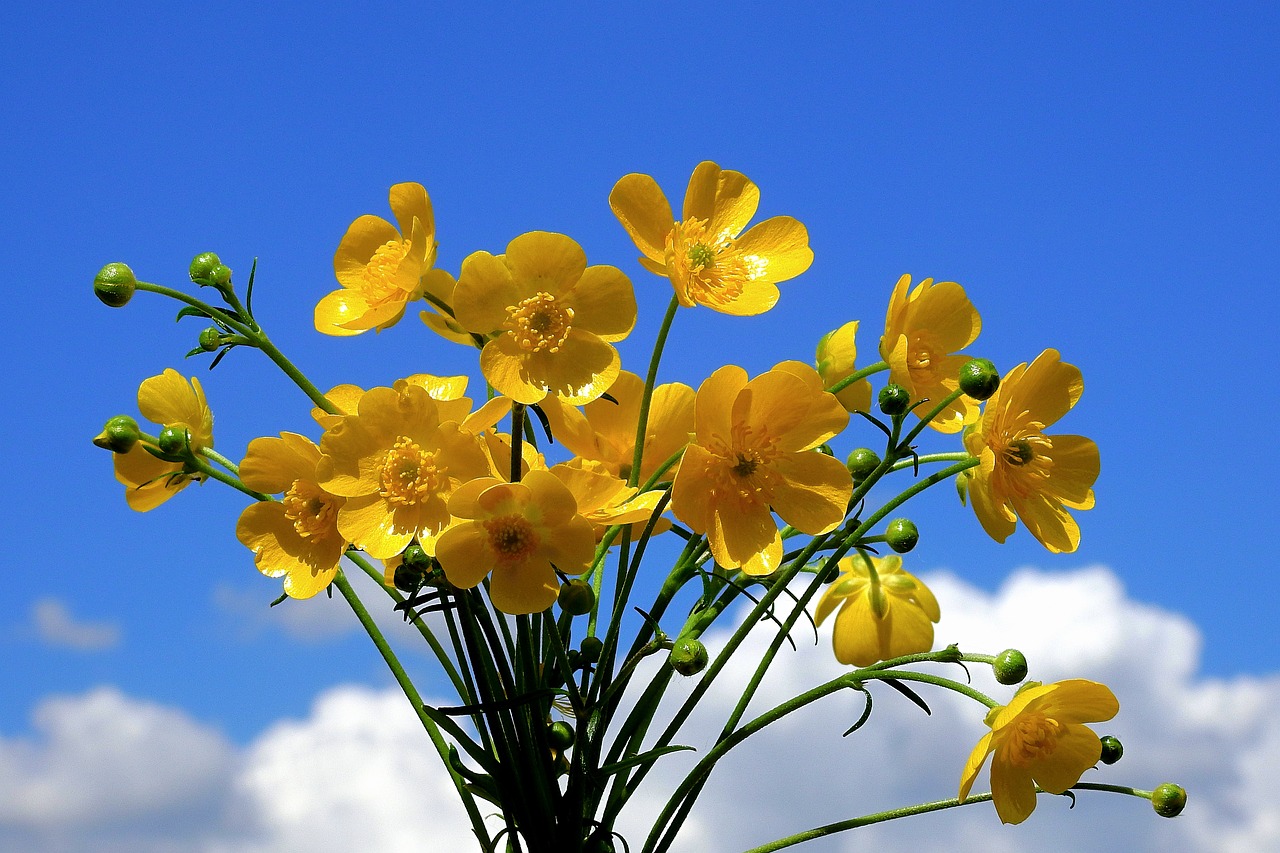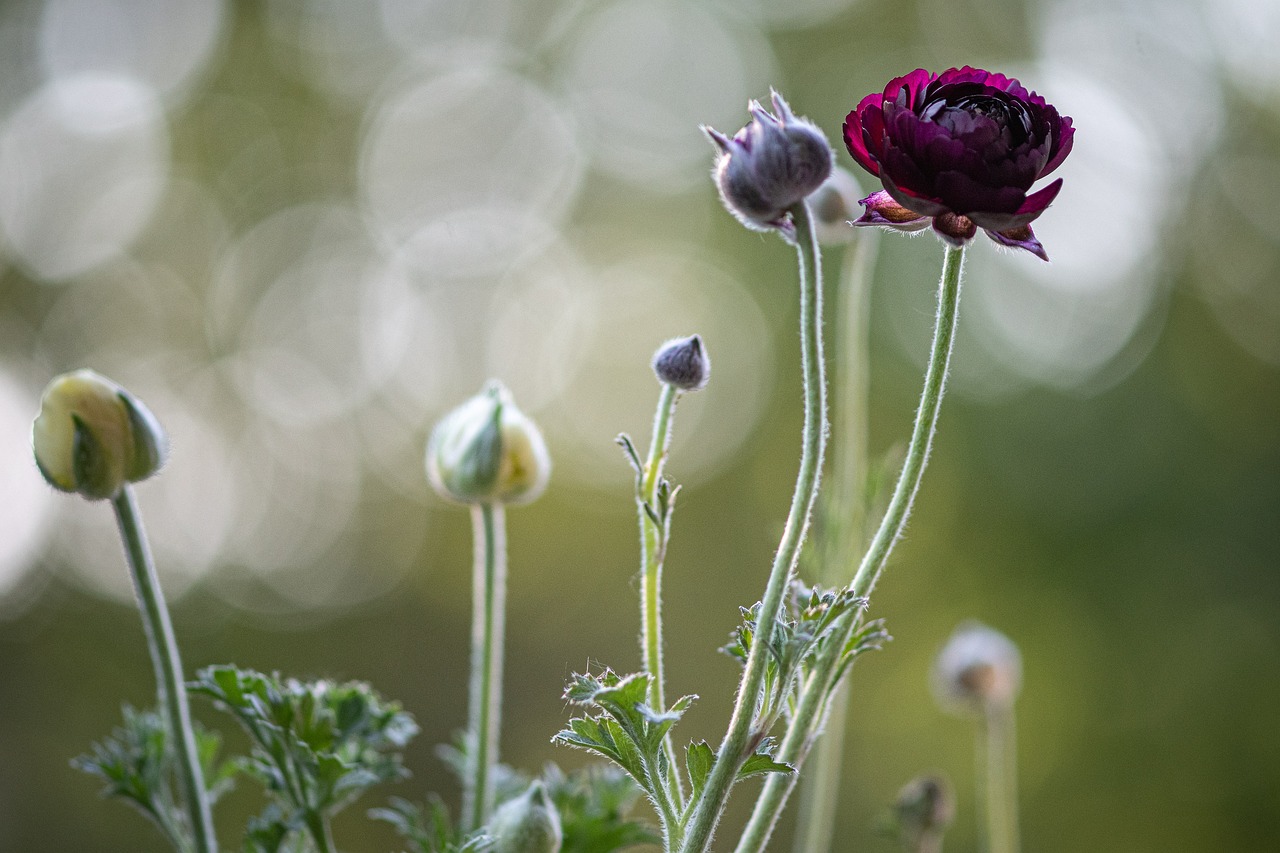“`html
Buttercup: A Comprehensive Guide to This Beautiful Flower
Buttercups, with their bright yellow petals and charming appearance, have captured the hearts of gardeners and flower enthusiasts alike. Known for their simple beauty and ease of growth, buttercups are an excellent addition to any garden. In this post, we will delve into the fascinating world of buttercups, exploring their habitats, characteristics, symbolic meanings, and how to cultivate them successfully.
Understanding Buttercups
Natural Habitat of Buttercups
Buttercups, belonging to the Ranunculus genus, are found in a wide range of environments across the world. These perennials thrive in temperate and cold climates, particularly in meadows, fields, and wetlands. They prefer well-drained soils but are versatile enough to adapt to various soil types. Buttercups typically bloom in spring and early summer, adding vibrant color to landscapes.
Characteristics of Buttercups
Buttercups are easily recognized by their glossy yellow petals and cup-shaped blooms. The plants usually grow to a height of 12 to 18 inches, with a spread of about 12 inches. The leaves are deeply divided and can range from bright green to a darker hue, depending on the species. What makes buttercups particularly interesting is their ability to reflect light, which gives their petals a shiny appearance.
The Symbolic Meaning of Buttercups
Buttercups are often associated with youthfulness, innocence, and joy. Their bright color and cheerful demeanor make them a popular choice for bouquets and floral arrangements. In the language of flowers, buttercups convey a message of happiness and positivity. They are also considered symbols of humility and simplicity, reflecting their unpretentious beauty.

How to Grow Buttercups
Planting Buttercups
To successfully grow buttercups, start by selecting a suitable location that receives plenty of sunlight. Although they can tolerate partial shade, full sun exposure will result in more robust blooms. Prepare the soil by ensuring it is well-drained and enriched with organic matter. Buttercups can be planted from seeds or tubers, with the latter being more common for most gardeners.
Caring for Your Buttercups
Buttercups require minimal maintenance once established. Regular watering is essential, especially during dry spells, but be careful not to over-water, as this can lead to root rot. Fertilize with a balanced, slow-release fertilizer in early spring to encourage healthy growth. Deadheading spent flowers will promote prolonged blooming and prevent the plant from self-seeding excessively.
Dealing with Pests and Diseases
Buttercups are relatively pest-resistant, but they can occasionally be affected by aphids, slugs, and snails. Use organic pest control methods, such as neem oil or diatomaceous earth, to manage outbreaks. As for diseases, powdery mildew and root rot can be problematic if conditions are too humid. Ensure proper air circulation and avoid overhead watering to minimize these risks.

Additional Tips for Growing Buttercups
Companion Planting with Buttercups
Buttercups can be effectively paired with other spring-blooming plants like tulips and daffodils. Their bright yellow flowers complement a variety of colors, creating a harmonious garden display. When planning your garden layout, consider the growth habits and heights of companion plants to ensure each species receives adequate sunlight and space.
Using Buttercups in Landscaping
Buttercups are versatile in landscaping, suitable for borders, rock gardens, and naturalized areas. They are excellent for adding a splash of color to dull spots in the garden and can also be used in more formal settings. When designing with buttercups, consider their growth cycle and the seasonal changes in your garden to maximize their visual impact.
Preserving Buttercups
If you wish to enjoy buttercups indoors, consider drying them for use in floral arrangements. To dry buttercups, hang them upside down in a dark, dry place until they retain their shape and color. This method preserves their natural beauty and allows you to enjoy their cheerful appearance all year round.
Conclusion
Buttercups are a delightful addition to any garden, offering a burst of color and a touch of nostalgia. Their ease of growth and minimal care requirements make them ideal for both novice and experienced gardeners. By understanding their needs and preferences, you can cultivate a thriving patch of buttercups that will bring joy and beauty to your outdoor space.
For more gardening tips and plant care guides, visit our gardening section. To learn more about the diverse world of flowers, check out the Royal Horticultural Society for expert advice and inspiration.
“`
